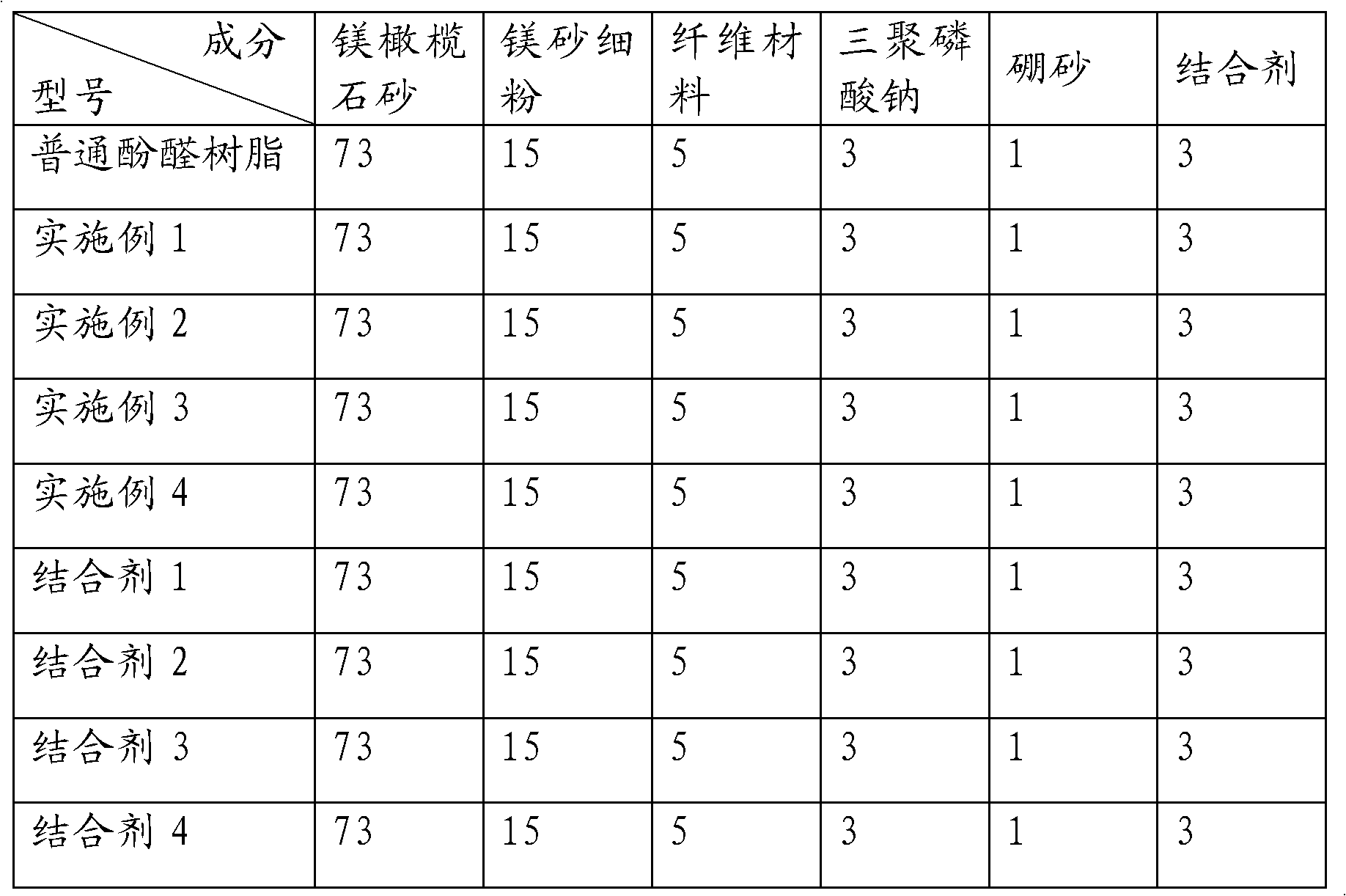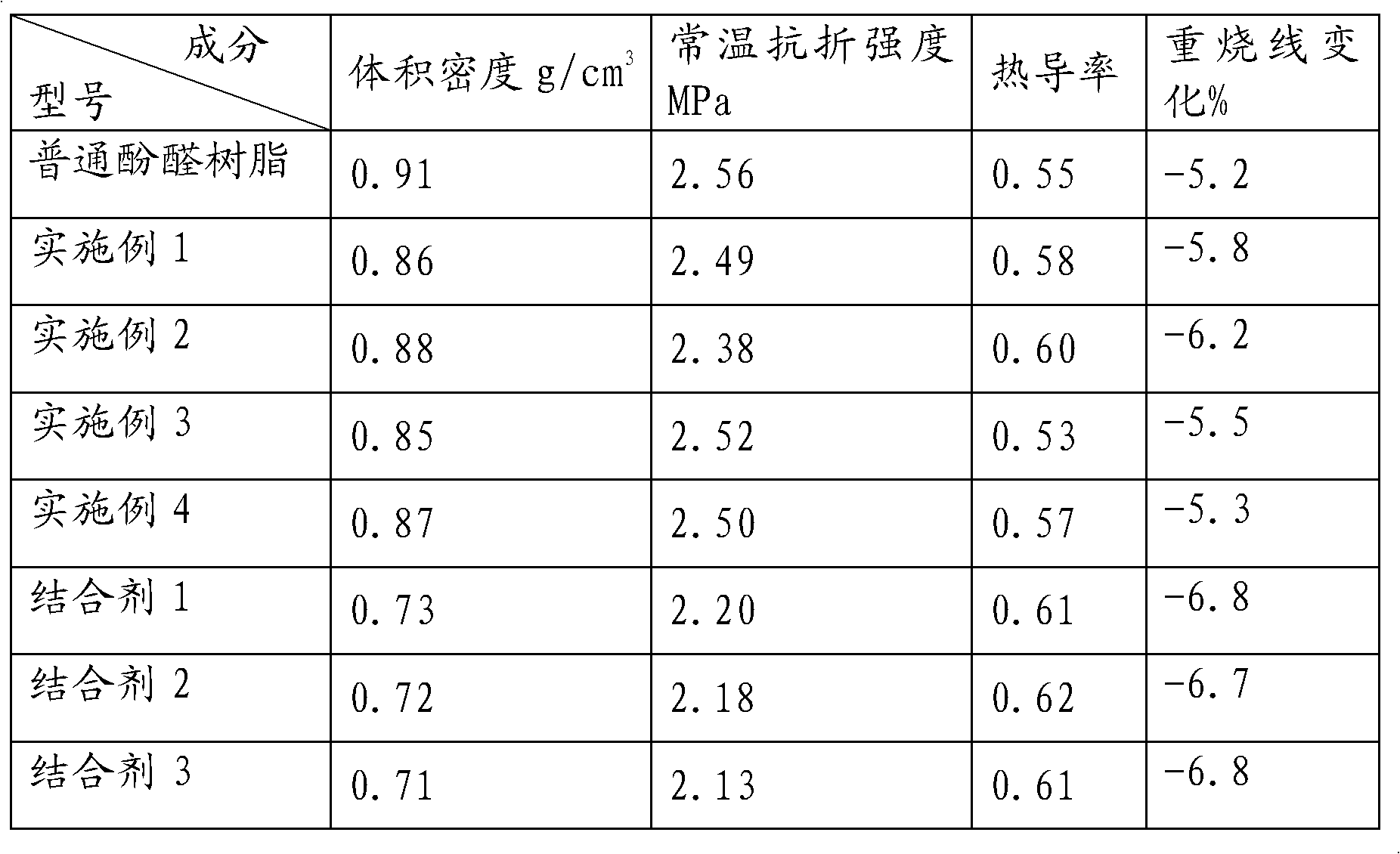Preparation method of phenolic resin for heat insulating shield
A technology of phenolic resin and thermal insulation board, which is applied in the field of organic polymer compounds and refractory materials, can solve the problems of not being suitable for pulverizing into powdery resin, low strength of thermal insulation board, low softening point of resin, etc. Bulk density and flexural strength, good performance
- Summary
- Abstract
- Description
- Claims
- Application Information
AI Technical Summary
Problems solved by technology
Method used
Image
Examples
Embodiment 1
[0025] Mix phenol and formaldehyde at a molar ratio of 1:0.9, add 1.5wt% hydrochloric acid to the mixture, keep it at 80°C for 4 hours, and perform addition polymerization, then add ethyl terephthalate, which accounts for 20% of phenol. Glycol ester waste, stir evenly; After atmospheric distillation to 120 ℃ to remove the by-product water of polycondensation; Distill the homogenate under 0.02MPa to remove the unreacted phenol in the homogenate to 0.3wt%, and the reaction product is discharged, Cool and pulverize.
Embodiment 2
[0027] Mix phenol and formaldehyde at a ratio of 1:0.75, add oxalic acid which accounts for 3wt% of phenol into the mixture, keep it at 100°C for 5h for addition polymerization, then add waste dimethyl terephthalate which accounts for 30wt% of phenol ,Stir and mix well; After atmospheric distillation to 150 ℃ to remove by-product water; Distill the homogenate under 0.05MPa to remove the unreacted phenol in the homogenate to 0.2wt%, discharge the reaction product, cool, and grind powder.
Embodiment 3
[0029] Mix phenol and formaldehyde at a ratio of 1:0.8, add 0.5wt% of sulfuric acid to the mixture, keep it at 90°C for 2h for addition polymerization, add 40wt% of phenol to butylene terephthalate Ester, stirring and mixing; after atmospheric distillation to 160°C; distilling the homogenate under 0.04 MPa to remove unreacted phenol in the homogenate to 0.25%, discharging the reaction product, cooling, and grinding.
PUM
 Login to View More
Login to View More Abstract
Description
Claims
Application Information
 Login to View More
Login to View More - R&D Engineer
- R&D Manager
- IP Professional
- Industry Leading Data Capabilities
- Powerful AI technology
- Patent DNA Extraction
Browse by: Latest US Patents, China's latest patents, Technical Efficacy Thesaurus, Application Domain, Technology Topic, Popular Technical Reports.
© 2024 PatSnap. All rights reserved.Legal|Privacy policy|Modern Slavery Act Transparency Statement|Sitemap|About US| Contact US: help@patsnap.com










